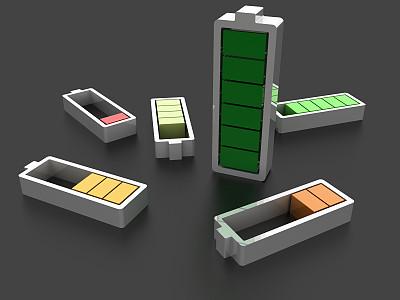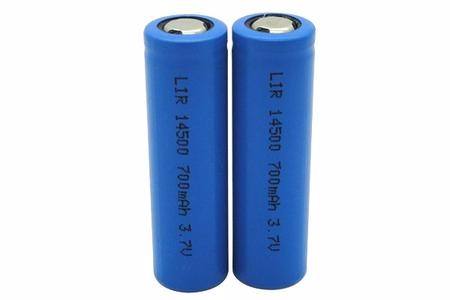Should Lithium Batteries be Left on Charger – Charging Methods
May 11, 2020 Pageview:4370
Lithium batteries are charged using a CC/CV charging process, i.e. constant current and constant voltage. The voltage is kept constant while each cell in the battery pack is charged to the set voltage while applying current. At the set voltage, the current automatically stops. The lithium battery can be left on the charger if the appropriate voltage limit is set and maintained; these batteries have various nominal voltages, therefore the right charger with the specified voltage range should be used based on battery specifications. Different chargers that could be used for lithium batteries range from an adaptor to a DC converter, a solar charge regulator or a vehicle adaptor.
Lithium batteries do not do well in extreme charging conditions; hence several battery chargers have inbuilt balancers to balance the charge on each cell in the battery, and also charge controllers such as: high temperature and current cutoff, to prevent any form of damage to the batteries due to high temperature or current. The prescribed charge rate should be between 0.5C to 1C for about 2-3 hours, and when a battery becomes hot, it is advised to discontinue charging.
A lithium battery is best charged using the recommended charger; the best charging practices for a lithium battery are enumerated below:
1.Turn off the device in which the lithium battery is contained
2.A moderate temperature, preferably room temperature should be maintained
3.Lithium batteries do not exactly need to be fully charged, charging to a battery level of 80% is better
4.If battery is warm, disconnect from the charging source
5.Before storing a lithium battery in a cool place, charge to about 40% of battery level
When charging a lithium based battery, some of the safety tips to be observed include:
Though lithium batteries could be left on chargers at the appropriate voltage and current range, however this might be hard to maintain; it is therefore advisable to unplug device with lithium battery from charger when a certain charge level has been attained, to avoid stress on the battery
At a charge level of a minimum of 80%, the battery should be used before recharging
At 20% or below, the battery should not be used as this may damage the battery
Charging slowly at a lower temperature increases the life cycle of the battery
Use the recommended lithium battery charger
IS IT BETTER TO KEEP LITHIUM BATTERIES CHARGED?
Keeping the lithium battery charged is a wise decision, but it is better for it to be partially charged than for it to be fully charged. Overcharging the battery puts strain on it and may shorten the life cycle, especially if it is charged at a high temperature and above the specified voltage and current.
Lithium based batteries should be charged because if it is stored when deeply discharged for a long period of time, the battery could become a hazard (it may explode) and hamper the safety of its handler.
Charging a lithium battery at its highest would lead to the highest rate of oxidation of the lithium ion and thereby reduce the efficiency of the battery.
Charging a lithium based battery at a partial charge of about 80% of battery level, at an optimal charge voltage of 3.92V per cell and storing at room temperature is recommended for extension of battery life
WHEN SHOULD YOU CHARGE YOUR LITHIUM BATTERY?
A lithium battery is best charged when it is discharged for a little while, when it is at 40% charge.
When a lithium battery is to be kept; it is advised that it is also charged to about 40% before storage.
ARE YOU KILLING YOUR LITHIUM BATTERIES?
Lithium based batteries are killed during every charge and discharge cycle; they normally have an approximate life cycle of 500 to 1500 charge cycle. A great depth of discharge to below 25% of battery charge gradually kills the battery; running the battery too low in power may lead to an explosion or running it down to zero before recharging can reduce the capacity of the battery by 30% in 300 to 500 charge cycles, while leaving battery charge to 75% can allow the battery over 2000 charge cycle life before degradation. Oftentimes, at extremely low discharge levels, a jumpstarter to revive the battery, and jumpstarting a lithium battery will kill it
Ideally, the mechanism of reaction in a lithium ion battery involves ion exchange between the cathode and electrode; however, some factors disrupt this ideal mechanism and kill the batteries. Factors like: keeping a cell in the battery at a high voltage, charging at an elevated temperature and charging at a full charge for an extended period, or allowing the battery to run all the way down to the lowest charge.
The greatest enemy of a lithium battery is heat; keeping batteries in a hot vehicle or storing at a high temperature would definitely damage the battery. High temperatures increase the rate of chemical reaction in the electrolyte of the batteries; result in few high performances, reduction in battery performance and quick deterioration of the cell. Studies show that exposing a battery to about 38oC in 12 months would reduce the battery capacity of the battery by 40%. Storing batteries at extreme conditions of cold is also a way to kill the batteries. Charging at a temperature of 0OC and above 45OC can kill the battery.
Unbalancing in lithium batteries can also kill the batteries; charging the cells at different voltage range or even a higher voltage can lead to the quick decline in the performance of the battery. In the case of unbalancing, the weakest cell experiences a process called short circuiting, the highly charged ones continually experience an increase in voltage; all of these processes generate heat within the battery, and remember heat is the greatest enemy of a lithium battery. In extreme cases, the battery can self-destruct.
Not maintain the lithium battery will definitely kill it; every device has a manual which contains manufacturer’s direction for use, using the wrong charger or not abiding the manufacturer’s specification for the battery will definitely kill the battery.
- Prev Article: What Does 3s Mean on Lipo Battery: Meaning and Cycle life?
- Next Article: What do I do With Old Lithium Batteries-Proper Disposal
Leave Message
Hottest Categories
-
Hottest Industry News
-
Latest Industry News












